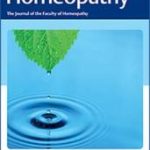Marta Marzotto, Clara Bonafini, Debora Olioso, Anna Baruzzi, Laura Bettinetti, Francesca Di Leva, Elisabetta Galbiati, Paolo Bellavite
Arnica montana Stimulates Extracellular Matrix Gene Expression in a Macrophage Cell Line Differentiated to Wound-Healing Phenotype
PLOS One, 2016, 11 (11), e0166340
Arnica montana (Arnica m.) is used for its purported anti-inflammatory and tissue healing actions after trauma, bruises, or tissue injuries, but its cellular and molecular mechanisms are largely unknown. This work tested Arnica m. effects on gene expression using an in vitro model of macrophages polarized towards a “wound-healing” phenotype. The monocyte-macrophage human THP-1 cell line was cultured and differentiated with phorbol-myristate acetate and Interleukin-4, then exposed for 24h to Arnica m. centesimal (c) dilutions 2c, 3c, 5c, 9c, 15c or Control. Total RNA was isolated and cDNA libraries were sequenced with a NextSeq500 sequencer. Genes with significantly positive (up-regulated) or negative (down-regulated) fold changes were defined as differentially expressed genes (DEGs). A total of 20 DEGs were identified in Arnica m. 2c treated cells. Of these, 7 genes were up-regulated and 13 were down-regulated. The most significantly up-regulated function concerned 4 genes with a conserved site of epidermal growth factor-like region (p<0.001) and three genes of proteinaceous extracellular matrix, including heparin sulphate proteoglycan 2 (HSPG2), fibrillin 2 (FBN2), and fibronectin (FN1) (p<0.01). Protein assay confirmed a statistically significant increase of fibronectin production (p<0.05). The down-regulated transcripts derived from mitochondrial genes coding for some components of electron transport chain. The same groups of genes were also regulated by increasing dilutions of Arnica m. (3c, 5c, 9c, 15c), although with a lower effect size. We further tested the healing potential of Arnica m. 2c in a scratch model of wound closure based on the motility of bone marrow-derived macrophages and found evidence of an accelerating effect on cell migration in this system. The results of this work, taken together, provide new insights into the action of Arnica m. in tissue healing and repair, and identify extracellular matrix regulation by macrophages as a therapeutic target.






Lascia un commento
Devi essere connesso per inviare un commento.